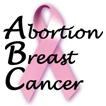Latest Web Page from the National Cancer Institute: A well cooked bowl of factoids
by Joel Brind, Ph.D.
On March 6 of this year, our own US National Cancer Institute (NCI), on its "Cancer Facts" web page on "Abortion and Breast Cancer", has stooped to a new low of disinformation. A stunning mix of distortions, misrepresentations, material omissions and outright lies, this so-called 'fact sheet' was perpetrated by the NCI to convince the nation and the world, contrary to the findings of over four decades of published medical research, that there is no abortion-breast cancer link.
The first distortion, which is repeated over and over again throughout the piece, is the confusion of the terms "induced abortion" and "spontaneous abortion". In an article of just over 500 words, the phrase "induced or spontaneous abortions" or "spontaneous or induced abortions" appears no less than five times; the term "induced abortion" three times, and the unmodified term "abortion" appears nine times.
There also appears one time the phrase "induced from spontaneous abortions", in the context of criticizing earlier (before the late 1990's; studies which largely showed abortion to be associated with increased risk) for their "inability to separate induced from spontaneous abortions." This is absurd, for one could hardly imagine a more effective job of confusing induced and spontaneous abortion than does this very 'fact sheet'.
In fact, the term "spontaneous abortion" never appears by itself in the 'fact sheet', nor does the word "miscarriage" ever appear in this sheet which is designed for the general public. Undoubtedly, many readers do not know that the terms "spontaneous abortion" and "miscarriage" are synonymous. No doubt even fewer are aware that decades of published research have established that miscarriage is generally not associated with increased risk of breast cancer, while induced abortion is. This was very clearly demonstrated in our own 1996 "Comprehensive review and meta-analysis" on induced abortion and breast cancer, published in the British Medical Association's epidemiology journal. Indeed, the lack of mention of this important review constitutes one of the major material omissions of the NCI 'fact sheet'.
Of course, it would have been difficult to cite our review and so grossly misrepresent the literature on the subject up to the mid-1990's, as in: "Some investigators reported an increase in risk, ...Other studies found no evidence of increased risk." On the contrary, our 1996 review catalogued 17 out of 23 studies which reported a positive association (increased risk) between induced abortion and breast cancer. Including every study published to date, we calculated an overall, statistically significant, average increased risk of 30%, among women who had had an induced abortion.
But the NCI would rather have us believe in the results of "recent large studies, particularly cohort studies, (which) generally show no association between breast cancer risk and previously recorded spontaneous or induced abortions." We are then treated to a glowing report of the 1997 study on 1.5 million Danish women, with over 10,000 cases of breast cancer, which study was published in the prestigious New England Journal of Medicine.
Never mind that fully one-fourth of that huge population was under the age of 25 at the end of the study: old enough to undergo some 40,000 abortions, but too young to suffer more than 8 cases of breast cancer.
Never mind that the Danish study misrepresented the legal status of abortion in Denmark, claiming that abortion was legalized in 1973 (as it was in the US), when it was in fact legalized in 1939.
Never mind that the Danish researchers used abortion records starting only in 1973, even though they included all Danish women born since 1935 in the study, thus misclassifying 60,000 women in the study who'd had an abortion, as not having had an abortion.
Never mind that, outrageously, the Danish team included breast cancer cases (the outcome variable) diagnosed as far back as 1968, fully 5.5 years before the recording of a single abortion (the exposure variable) in the study. This is a flagrant violation of the most fundamental rule in epidemiological research: Exposure must always precede outcome.
Never mind that the women in the study classified as with v. without induced abortion were not comparable, with a more than twofold difference in their follow-up period for breast cancer.
Never mind that notwithstanding all these egregious flaws, and others, the Danish group still managed to report, despite no "overall effect" of induced abortion on breast cancer risk, a statistically significant trend of increasing risk with increasing gestational age at abortion.
Instead, the NCI wants us to focus on the most recent studies, four of them, published in 2000 and 2001, because they relied on "data on abortion history before the breast cancers occurred." These studies also "showed no increased breast cancer risk in women who had induced abortions."
Never mind the 1989 study by the New York State Department of Health, which reported a statistically significant, 90% increased risk in women who'd had an induced abortion, a finding based entirely on medical records collected at time of abortion. This is a most convenient and material omission.
Never mind that of the four most recent studies cited, which studies are supposed to circumvent "problems" with the earlier studies; problems which "included small numbers of women", two (Lazovich 2000; Newcomb and Mandelson 2000) include only 26 and 23 postabortive breast cancer cases, respectively. These numbers are too small to detect a risk increase of the magnitude of 50%.
Never mind that another of these four recent studies (Goldacre 2001) echoed the Danish study in its gross misclassification (over 90%) of women who'd had an abortion as not having had an abortion.
Never mind that the fourth of these recent studies (Tang 2000), the only study which actually tested the accuracy of abortion self-reports between breast cancer cases and healthy women (controls), actually concluded: "The authors' data do not suggest that controls are more reluctant to report a history of induced abortion than are women with breast cancer."
But the NCI just stands this truth right on its head, falsely speaking of "self-reports of abortion, which have been shown to differ between breast cancer patients and other women."
Yet apparently, all the above is not enough untruth and distortion to make the NCI's case against the abortion-breast cancer link stick. We are also supposed to believe that a general problem with the earlier studies was "incomplete knowledge of other breast cancer risk factors that may have been related to a woman's history of induced abortion.", and that the Danish study supposedly fixed that, by "adjusting the data for several established breast cancer risk factors." That is an outright falsehood. In fact, the Danish study is likely the most obvious example of a dataset lacking in data on other established risk factors. The only established risk factors that the Danish study adjusted for were age and age at first childbirth.
You can even find the official list of established risk factors, all but two of which the Danish study did not adjust for, at the end of the NCI 'fact sheet': "age, a family history of breast cancer, an early age at menarche, a late age at menopause, a late age at the time of the first birth of a full-term baby, alcohol consumption, and certain breast conditions", and postmenopausal obesity.
Wait a moment: What was that about "late age at the time of the first birth of a full-term baby"? Doesn't that mean that for a young woman or a teenager, having an abortion will delay the first term birth, therefore leaving her with a higher risk of breast cancer than the childbirth option?
You bet it does. And that's a mighty big connection between abortion and breast cancer for about half of potential abortion clients. But the impression from the NCI 'fact sheet' that there is no connection at all between abortion and breast cancer is so overwhelming, and the wording so carefully crafted to disguise the connection, how many readers of this 'fact sheet' would ever notice?
That would appear to be the point of the NCI 'fact sheet' on abortion and breast cancer: to preserve the undeserved reputation of abortion as safe for women. Never mind the truth.
* Joel Brind, Ph.D., is a Professor of biology and endocrinology at Baruch College of the City University of NY, where he has been teaching since 1986. He earned his B.S. from Yale in 1971 and his Ph.D. from NY University in 1981. His research on the connections between reproductive hormones and human disease has included breast cancer since 1982. Since 1992 Dr. Brind has written and lectured extensively on the connection between induced abortion and breast cancer.
For more info, visit Brind's website: AbortionCancer.com
© 2002 RFM NEWS
www.RFMNEWS.com
Permission to reprint granted with acknowledgment

